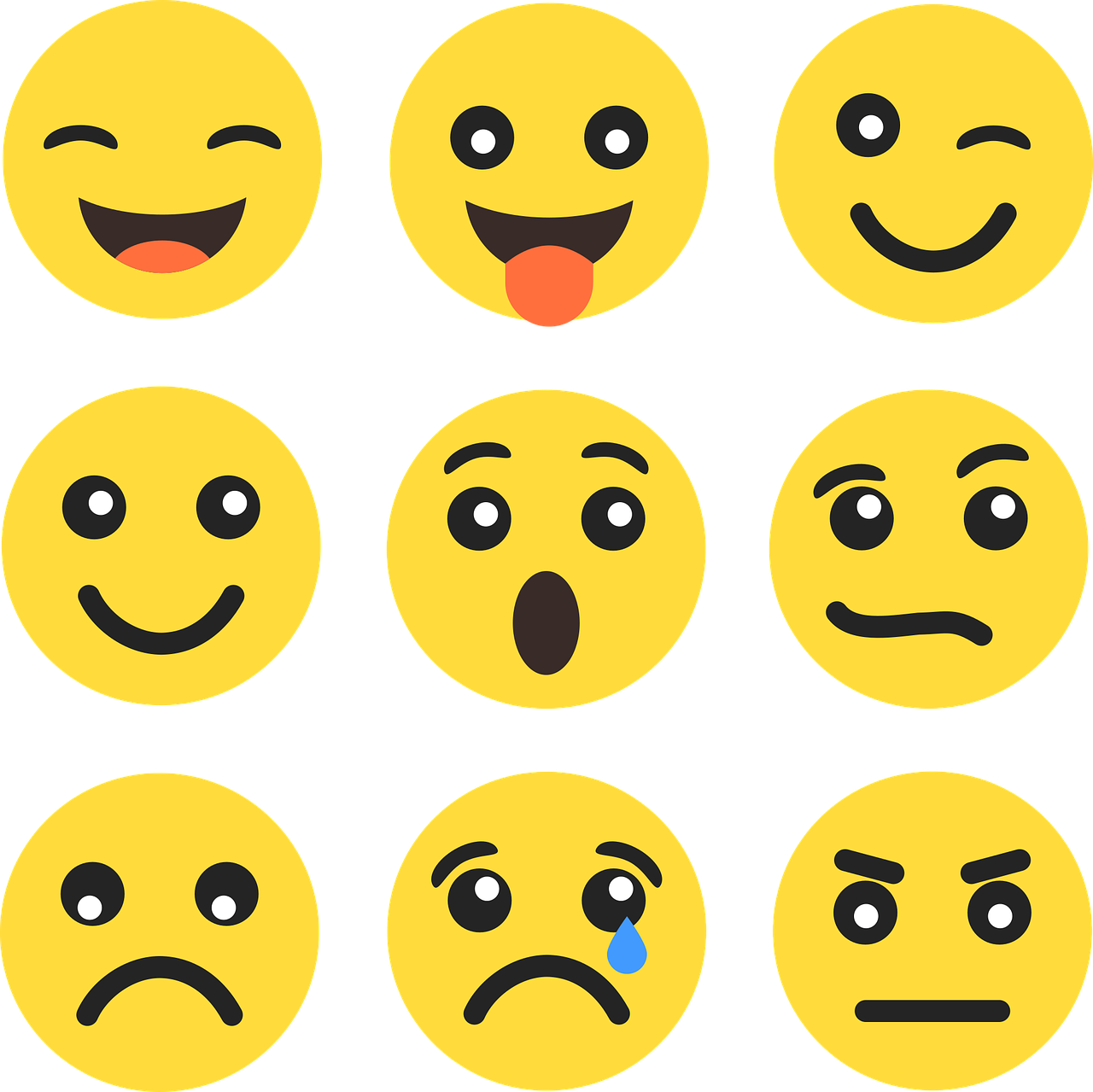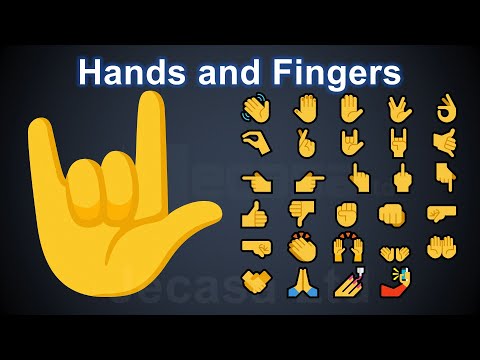Emojis have become an integral part of our digital communication, adding a visual dimension to our words and allowing us to express emotions and ideas in a more nuanced and engaging way. With the proliferation of social media, messaging apps, and online platforms, emojis have infiltrated every corner of our digital lives, transcending language barriers and cultural differences. Understanding the meaning of emojis is crucial for effective and meaningful communication in today’s digital world. In this comprehensive guide, we will explore the origins, evolution, and standardization of emojis, as well as delve into some popular and commonly used emojis and their meanings.
- The Meaning of Smiley: Exploring the History and Types of this Popular Facial Expression
- Heart Emoji Color Meaning Deciphering the Language of Love
- Emoji Sign Meanings: A Comprehensive Guide to Understanding Emoticons
- Praying Hands Emoji: A Symbol of Hope, Gratitude, and Unity
- The Evolution and Meaning of Emojis on Facebook: A Comprehensive Guide
Origins and Evolution
The history of emojis can be traced back to the late 1990s, when Japanese mobile phone operator NTT DoCoMo introduced a set of 176 pixelated images called emoji, which means picture character in Japanese. These early emojis were primarily used to convey simple emotions and weather conditions, such as happy, sad, sunny, and rainy. However, as technology advanced and messaging became more prevalent, emojis underwent a remarkable evolution. Today, there are over 3,300 emojis recognized by the Unicode Consortium, with new ones being added every year.
Early Emojis and Their Meanings
Initially, emojis were only available on Japanese mobile phones and were not standardized across different devices and software platforms. As a result, users had to rely on their own interpretations and associations to understand the meaning behind each emoji. For example, the “smiling face with heart-eyes” emoji was originally intended to express love or infatuation, but it was also commonly used to convey joy or happiness. Similarly, the “face with tears of joy” emoji, which is now one of the most popular and widely used emojis, was originally meant to depict laughing so hard that tears were streaming down the face.
Expansion of Emojis
As emojis gained popularity, they began to expand in scope and diversity. No longer limited to simple emotions and weather conditions, emojis started to encompass a wide range of objects, activities, people, and even cultural symbols. For instance, the “folded hands” emoji, also known as the “praying hands” emoji, originated from Japanese culture where it is used as a gesture of gratitude or apology. However, it is now commonly used to represent prayer or hope in different contexts.
Unicode Standardization
The standardization of emojis under the Unicode Consortium has played a pivotal role in their global adoption and cross-platform compatibility. Unicode is a computing industry standard that assigns unique codes to characters, symbols, and emojis, ensuring that they are consistently represented across different devices and software platforms. This means that an emoji will look the same on an iPhone, Android, or computer, regardless of the operating system or app being used.
How Emojis are Categorized Under Unicode
Emojis are categorized into nine main groups under Unicode: Smileys People, Animals Nature, Food Drink, Travel Places, Activities, Objects, Symbols, Flags, and Skin Tones. Each group contains several subcategories, such as face emojis, hand gestures, animals, food and drink items, and various objects. This categorization makes it easier for users to find specific emojis when using them in their digital communication.
Emoji Version Updates and Additions
Unicode releases new versions of emojis every year, with each version containing new emojis and updates to existing ones. One of the most significant updates was the addition of skin tone modifiers in 2015, which allowed users to choose from five different skin tones for certain human emojis. This was done in an effort to promote diversity and inclusivity in digital communication.
Popular Emojis and Their Meanings
With thousands of emojis to choose from, it can be overwhelming to keep track of all their meanings. However, there are some emojis that have become universally popular and commonly used in different contexts. Here are a few of them and their meanings:
“Face with Tears of Joy” Emoji
As mentioned earlier, the “face with tears of joy” emoji is one of the most popular and widely used emojis. It is typically used to convey laughter or amusement, but it can also be used to express relief, sarcasm, or even sadness.
“Folded Hands” Emoji
The “folded hands” emoji, as mentioned earlier, has its roots in Japanese culture. It is often used to represent prayer, hope, gratitude, or pleading.
“Red Heart” Emoji
The “red heart” emoji is a classic representation of love, affection, and romance. It can also be used to show appreciation, support, or friendship.
“Clapping Hands” Emoji
The “clapping hands” emoji is used to show applause, praise, or celebration. It can also be used in a sarcastic manner to convey insincerity or disapproval.
“Fire” Emoji
The “fire” emoji is often used to represent something being hot, exciting, or trendy. It can also be used to express enthusiasm, passion, or intensity.
“Thumbs Up” Emoji
The “thumbs up” emoji is a universal symbol of approval, agreement, or success. It can also be used to show encouragement or support.
Commonly Misinterpreted Emojis
While most emojis have straightforward meanings, there are some that can be easily misinterpreted if not used in the correct context. Some emojis may also have multiple meanings depending on the user’s cultural background or personal interpretation. Here are a few examples:
“Folded Hands” Emoji
As mentioned earlier, the “folded hands” emoji is often used to represent prayer or hope. However, it can also be used to convey a high-five, a hug, or even sarcasm.
“Eggplant” Emoji
The “eggplant” emoji is commonly associated with phallic imagery and is often used as a euphemism for a certain male body part. However, it can also be used in its literal sense to represent the vegetable.
“Peach” Emoji
Similar to the “eggplant” emoji, the “peach” emoji is also associated with sexual connotations, particularly referring to a certain female body part. However, it can also be used to represent the fruit itself.
Tips for Using Emojis Effectively
While emojis can add a fun and playful element to our digital communication, it is important to use them appropriately and effectively. Here are some tips to keep in mind when using emojis:
- Consider your audience: Different audiences may have varying interpretations of emojis, so it’s important to know who you are communicating with and how they may perceive certain emojis.
- Use emojis sparingly: While emojis can enhance your message, using too many can make it difficult to read and understand. Stick to a few well-chosen emojis to convey your intent.
- Be mindful of cultural differences: Emojis may have different meanings or associations in different cultures, so it’s essential to be aware of this when communicating with people from diverse backgrounds.
Conclusion
Emojis have come a long way since their humble beginnings in Japan, evolving into a ubiquitous form of communication in today’s digital world. Understanding the meaning behind emojis is crucial for effective and meaningful communication, and we hope this comprehensive guide has shed some light on the origins, evolution, standardization, and popular use of emojis. So go forth and express yourself with emojis, but remember to use them responsibly and effectively.




